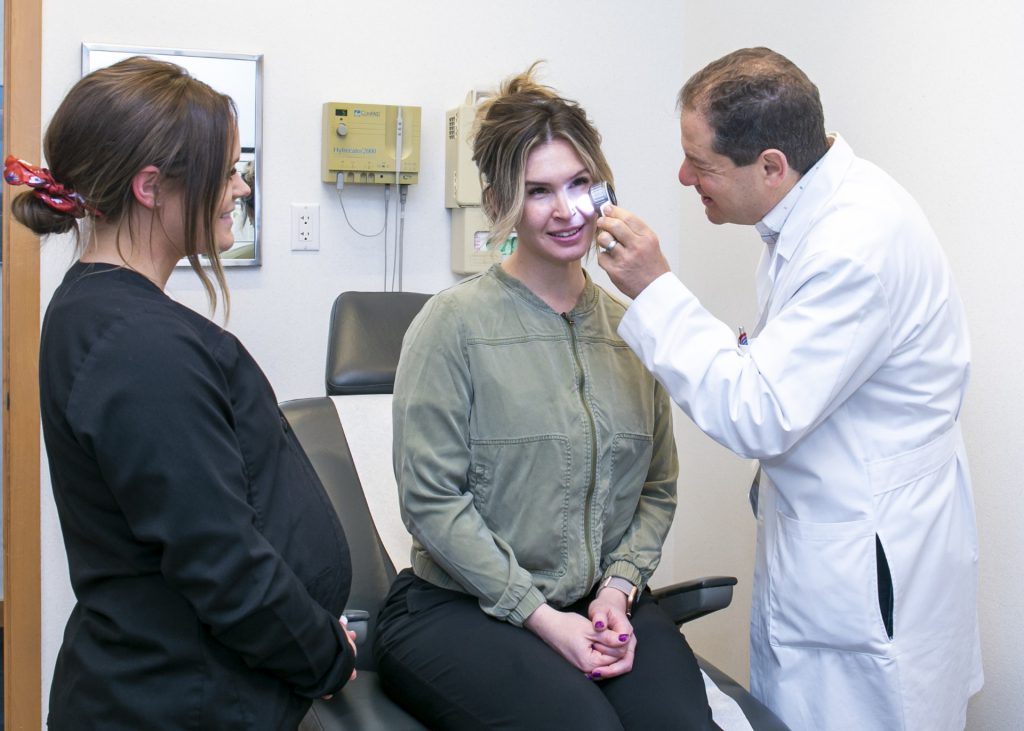What you need to know about skin cancer

Skin cancer is the most prevalent type of cancer in the United States, with non-melanoma cancers, including basal cell carcinoma and squamous cell carcinoma, being the most common. Melanoma, the most serious form of skin cancer is on track for 100,640 new melanomas to be diagnosed in 2024 alone. No matter the type of skin cancer, early detection is crucial, as it significantly increases the treatability of these cancers.
Dr. Joel Schlessinger, a board-certified dermatologist, Mohs surgeon and cosmetic surgeon at Schlessinger MD, emphasizes the importance of self-monitoring for suspicious or changing moles. “If you notice any changes, it’s vital to get them evaluated by us immediately,” he advises. “Should a mole need removal, we will do so during your appointment and perform a lab biopsy. If the biopsy does reveal the mole is cancerous, we will bring you back in for further removal. As Schlessinger MD we specialize in Mohs surgery, an advanced skin cancer removal procedure that I have performed over 3000 times in my career.”
Dr. Daniel Schlessinger, also a board-certified dermatologist as well as Mohs surgeon and cosmetic surgeon, explains that Mohs surgery, or Mohs micrographic surgery, is the most advanced method for treating skin cancer. “This technique involves removing cancerous lesions layer by layer and examining each layer under a microscope to ensure all cancer cells are eliminated, typically offering a 96%-98% cure rate,” he details.
If diagnosed early, skin cancer can be very treatable. That said, what steps should you take to proactively manage your skin health and reduce your risk of serious skin cancer? In this article, we explore various preventive measures, including:
• What factors contribute to cancerous moles on skin?
• At what age should I start skin cancer screenings?
• How often should I get moles checked?
• What can I do to prevent skin cancer?
What factors contribute to cancerous moles on skin?
Skin cancer can and does happen in every skin tone at nearly any age. However, there are a few known risk factors that can increase your chances of having cancerous moles on the skin.
Fair skin increases the risk of skin cancer due to its lower melanin content, which offers less protection against harmful UV rays. People with fair skin, blonde or red hair and those who freckle or sunburn easily are at a higher risk of developing skin cancer compared to those with darker complexions.
The risk of skin cancer also increases with greater exposure to UV radiation. While skin cancer can develop in young individuals, it is more commonly diagnosed in older adults who have experienced prolonged UV exposure over their lifetime. Additionally, younger people who frequent tanning booths or have had intense sun exposure in brief periods, particularly those who have suffered severe sunburns, are also at increased risk.
Finally, while most moles are typically benign, having many of them (fifty or more) can heighten your risk for melanoma. Atypical moles, known as dysplastic nevi, are particularly prone to becoming cancerous. These moles tend to be larger than ordinary moles, feature irregular edges, might be slightly elevated and are often very dark or black in color, although they can present as red or blue as well. If you have an immediate family history of skin cancer or if you have had a cancerous lesion removed in the past, you are also more likely to develop skin cancer.
At what age should I start skin cancer screenings?
No matter your age, if you notice a mole that has an unusual shape, is growing, bleeding, irritated or appears darker or different from your other moles, it is crucial to consult our board-certified dermatologist. If you don’t notice any changes during self-examinations or have any known risk factors like a family history of skin cancer, we recommend you start scheduling your annual skin cancer check appointments at around age 20.
When preparing for your skin cancer screening appointment, please remove all nail polish and makeup. This is important because melanoma can develop under the nail beds, and clear visibility is essential for a thorough examination. We also recommend you wear your hair down and avoid tight hairstyles so we can thoroughly examine your scalp, which is an area where skin cancer can and does present.
How often should I get moles checked?
The frequency of your skin cancer screenings should be tailored to your individual health history and risk factors. Everyone should regularly conduct a self-skin cancer check for irregular moles. If you have no history of skin cancer and no significant risk factors, annual screenings may be sufficient. However, for those with risk factors, we might suggest screenings every six months. We can discuss the best schedule for you during your appointment.
What can I do to prevent skin cancer?
One of the best things you can do is to schedule and keep your annual skin cancer screenings. Although this won’t directly prevent skin cancer, it can significantly improve the chances of your doctor detecting and removing potentially dangerous moles early on before they pose a serious risk.
It’s essential to wear sunscreen every day of the year, regardless of the weather. Opt for a broad-spectrum sunscreen with an SPF of at least 30 and reapply it every two hours when you’re outdoors. To further protect yourself, try to stay out of the sun between 10 a.m. and 4 p.m. when UV rays are strongest. Wearing long sleeves, long pants, sunglasses and wide-brimmed hats can also offer additional protection against sun exposure.
Ready to schedule your annual skin cancer check? To reserve an appointment with Dr. Joel Schlessinger or one of our physician assistants, visit our appointment page and book conveniently online.